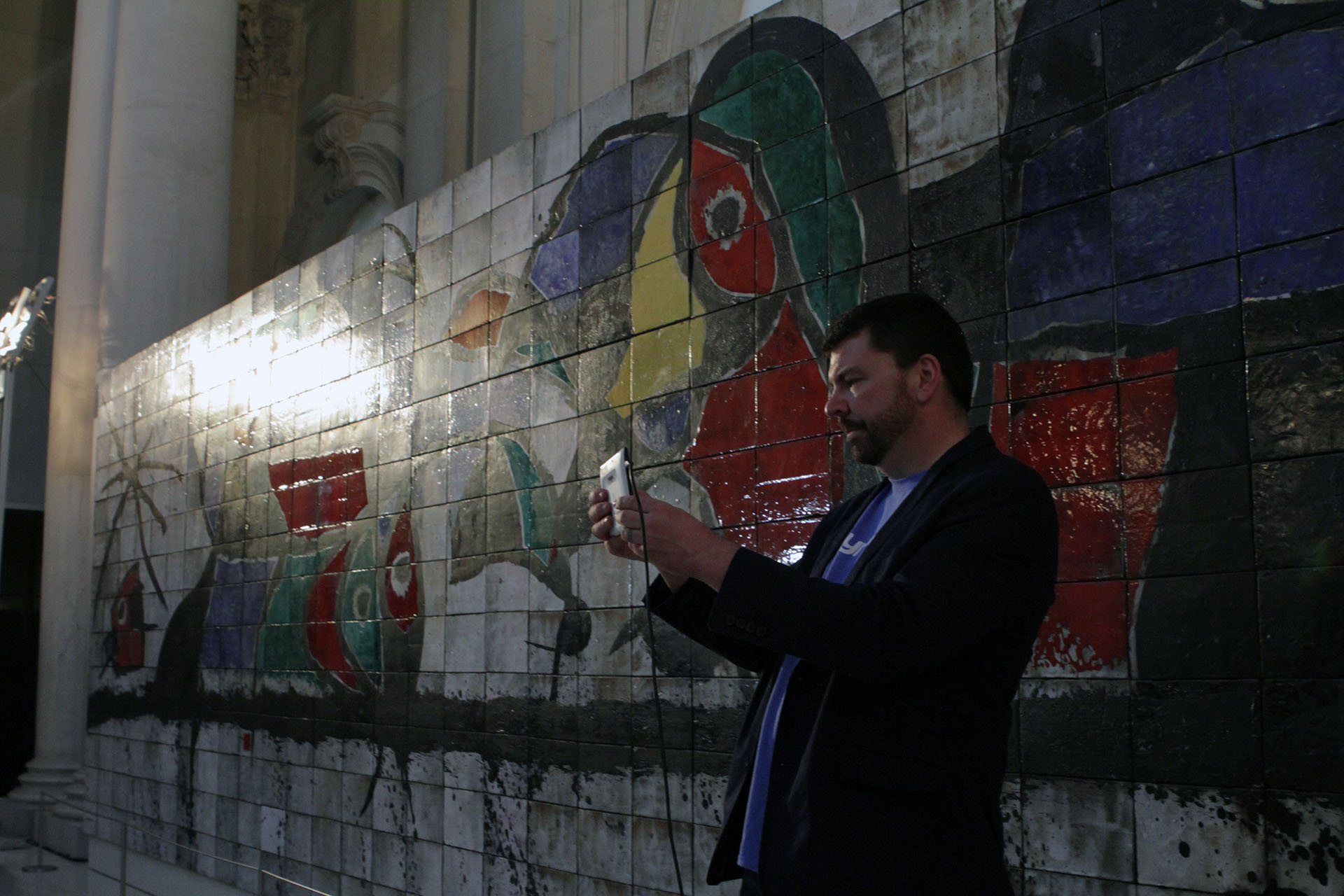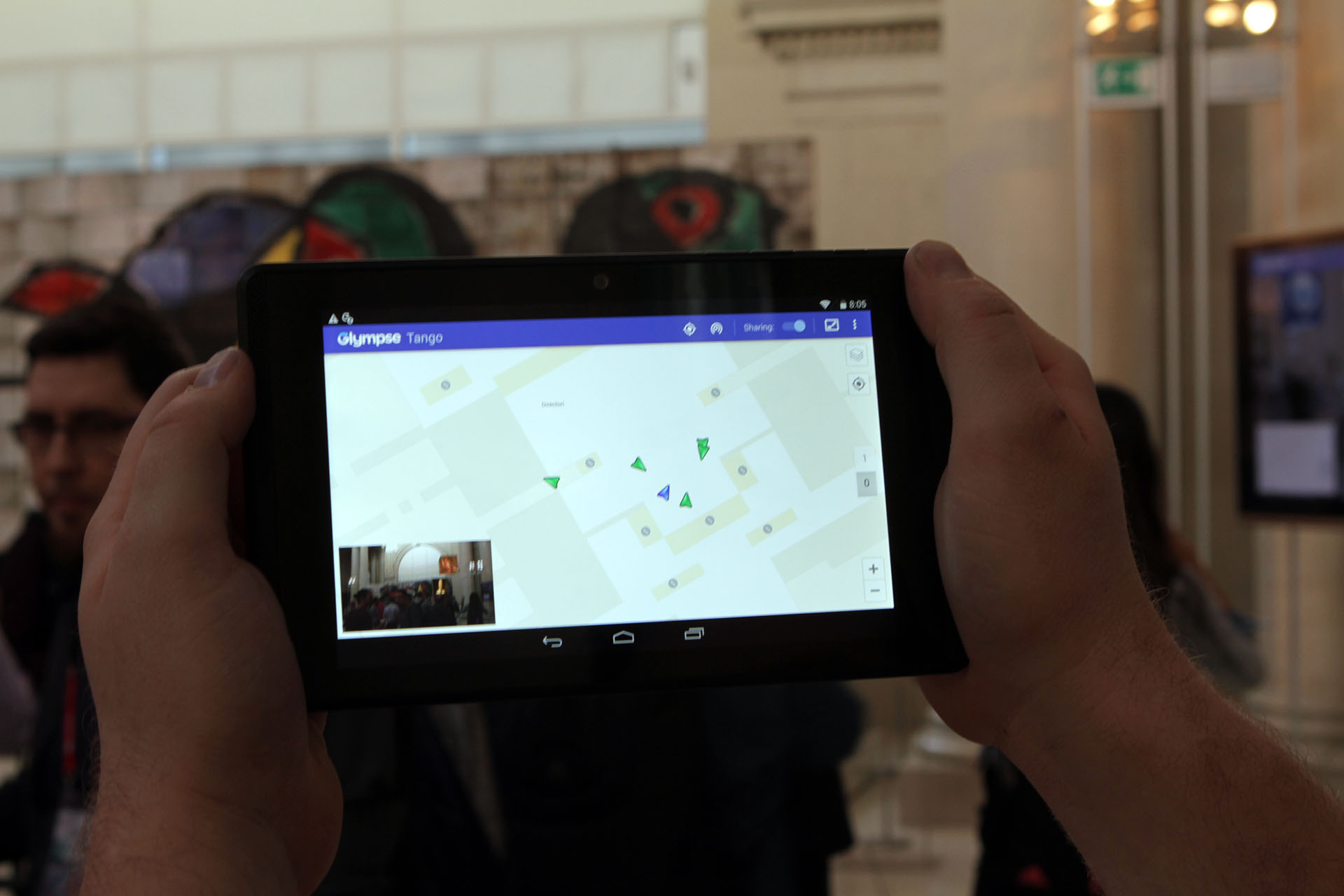Tengo Tango: Lenovo Demos Project Tango Experience In Art Museum (Updated)
As far as tradeshows go, you can hardly ask for a better locale than Barcelona, Spain, and you can’t go wrong with using the Museu Nacional D’Art De Catalunya as a backdrop for your event and product demo, which is what Lenovo did at Mobile World Congress to showcase its Project Tango tablet concept.
Was it earth-shattering? No. But it did give us a taste of what Project Tango can do and how augmented reality can offer benefits in a variety of ways.
A number of journalists, including yours truly, were shuttled from the MWC convention center to the art museum for refreshments and demos. Lenovo had us sorted into groups, and as our number was called, we walked through a gallery with a tour guide. She showed us how some paintings were virtually tagged so that when you aimed the Project Tango tablet’s camera at them, little white rectangles appear. When you click a box, you’re presented with additional information about the work, its artist and so on. This app is called GuidiGO (and funny enough, the big cover image on its homepage is the main meeting area we were in at the Museu Nacional D’Art De Catalunya.)
Further, when you aimed the tablet at the floor, you could see a blue dotted line showing you where you should go next. At times, though, following the line technically meant that you would be making a sharp turn into a priceless work of art, as the device seemed to have trouble drawing the line around corners. At the end of the tour—the end of the blue dotted line—we saw an inverted tear drop, like on Google Maps, that indicates you’ve arrived at your destination.
Think of it like those ear-piece-walking-tour things, but better—far more interactive, comprehensive and flexible.
While we waited for our turn, we grazed and meandered about in a big hall in the museum. A number of people had Project Tango tablets, and you could track where they all were on a live map (they were represented by little arrows) on a huge display set up in one corner.
If you had one of the tablets, you could hold it up and point it around the room. When the device “found” another Tango tablet, you could see a virtual icon floating above that person’s head. (This app is Glympse.)
Get Tom's Hardware's best news and in-depth reviews, straight to your inbox.
So, then, there were really two use cases on display at the Lenovo event, but to me, both point towards navigation. In one case, you can see how you could engage more fully with people, places and things that are tagged. Sure, it’s cool in a museum, but imagine that you’re in an airport trying to figure out where you’re supposed to go. You could hold your phone (or tablet, but in this fantasy it’s a phone) up to a gate and see the flight information, such as when it’s departing and if it’s delayed. When walking the streets of a city, you could point your phone at buildings along the block and see the info you’d normally extract from a Google search (business name, hours, menu, ratings, etc.) on your display. And so on and so forth. All of this data would be superimposed on the image your camera sees and displays on your screen.
I spent a good deal of time in Barcelona using my phone and Google Maps to get around. How much better would it have been, though, if instead of glancing down at an arrow slowly creeping its way down an illustrated facsimile of the street, I could have followed that blue dotted line from our flat all the way to La Boqueria for lunch.
I also love the location feature. If you and your acquaintances were meeting somewhere—say, a music festival, which is crowded and expansive—and your devices could all “see” each other, you could hold your phone up to the crowds and just look for the icons dancing above your friends’ heads.
It’s important to note that none of this is obtrusive to others nearby. You’re the only person that can see the superimpositions and overlays on your device’s screen (unless someone is being creepy and trying to steal a glance).
We’ve seen progress on Project Tango from both Lenovo and Intel just since CES (which was mere weeks ago), and the two companies are taking Google’s technology in different, but promising, directions.
Update, 3/1/16, 12:15pm PT: Added mentions of and links to the apps used in the demos.
Seth Colaner is the News Director for Tom's Hardware. Follow him on Twitter @SethColaner. Follow us on Facebook, Google+, RSS, Twitter and YouTube.
Seth Colaner previously served as News Director at Tom's Hardware. He covered technology news, focusing on keyboards, virtual reality, and wearables.
-
Arbie This reminds me of the excellent techno-thriller "Daemon", by Daniel Suarez. It seems more prescient as time goes on.Reply -
bit_user Needs moar HoloLens.Reply
BTW, Project Tango tablets can't accurately "see" more than about 4 meters away. That might help explain its difficulty detecting obstacles, but perhaps they didn't even try. They also need decent lighting.






